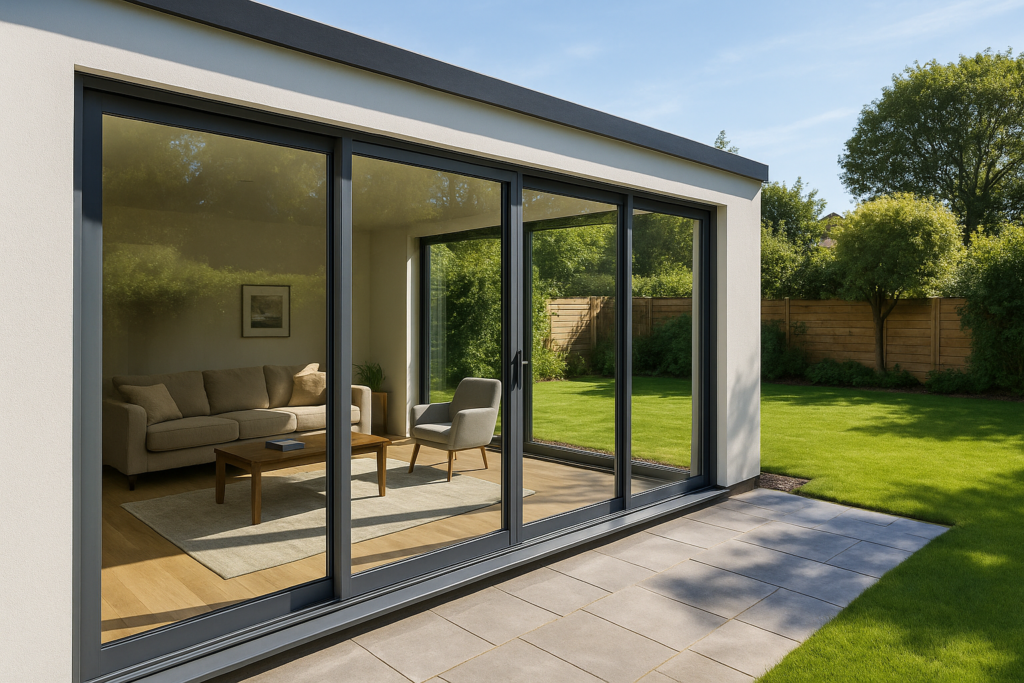Sliding doors are a hallmark of modern architecture, connecting indoor and outdoor spaces while filling interiors with natural light. However, traditional glass sliding doors often come with challenges—heat loss in winter, solar heat gain in summer, glare, and UV damage. This is where glass low E becomes the preferred choice.
Low-emissivity glazing transforms sliding doors into energy-efficient, comfortable, and visually appealing design features. In this article, we’ll explore when and why glass low E is preferred in sliding door design, its benefits, technical aspects, and applications in both homes and commercial spaces.
What Is Glass Low E?
Glass low E (low-emissivity glass) is coated with an ultra-thin, transparent metallic layer designed to reflect infrared and ultraviolet light while allowing visible light to pass through.
- In cold seasons: It reflects indoor heat back into the room.
- In hot seasons: It blocks unwanted solar radiation, keeping interiors cool.
- Year-round: It reduces glare and UV damage without sacrificing brightness.
This makes glass low E sliding doors an advanced alternative to traditional clear glazing.
Why Sliding Doors Need Glass Low E
1. Direct Exposure to Sunlight
Sliding doors usually face gardens, patios, or balconies, where they’re exposed to intense sunlight for long periods. Standard glass lets in too much heat, leading to overheating. Glass low E moderates this, ensuring comfort and energy efficiency.
2. Large Glazing Surfaces
Because sliding doors often consist of wide panels, they have a higher risk of heat transfer. Low-E coatings improve insulation, making these large surfaces efficient year-round.
3. Lifestyle and Comfort
Sliding doors are intended to create openness, but without the right glass, they can cause hot spots, glare, and drafts. Low-E glazing keeps interiors consistently comfortable.
4. Protection for Interiors
UV rays fade carpets, furniture, and artwork. Glass low E blocks up to 99% of UV radiation, preserving interiors for years.
Benefits of Glass Low E Sliding Doors
Energy Efficiency
- Reduces heating costs in winter by reflecting heat back indoors.
- Cuts cooling costs in summer by blocking infrared radiation.
Comfort
- Prevents cold drafts near doors in winter.
- Eliminates hot zones in rooms with high sun exposure.
Safety and Durability
- Can be paired with tempered or laminated glass for added safety.
- Meets modern building codes for efficiency and strength.
Aesthetic Appeal
- Maintains natural brightness and expansive views.
- Available in different coatings and tints to match design needs.
When Is Glass Low E Most Preferred in Sliding Door Design?
1. Homes in Hot or Cold Climates
In extreme climates, sliding doors without Low-E coatings quickly become inefficient. Low-E ensures year-round thermal comfort.
2. South- and West-Facing Doors
These orientations receive the most solar radiation. Low-E coatings reduce solar heat gain without compromising visibility.
3. Large Patio or Balcony Doors
Bigger glass surfaces increase the need for thermal efficiency. Low-E coatings ensure these doors perform just as well as walls in terms of insulation.
4. Modern Energy-Efficient Homes
As homeowners adopt net-zero energy practices, Low-E sliding doors are essential to comply with updated codes and sustainability standards. For broader applications, see Where Is Glass Low E Most Used in Modern Housing?.
Technical Aspects of Low-E Sliding Door Glass
- U-Value: Indicates heat transfer; lower values are better for insulation.
- Solar Heat Gain Coefficient (SHGC): Lower values mean more effective solar control.
- Visible Light Transmittance (VLT): Ensures sliding doors remain bright and transparent.
- Emissivity: The lower the emissivity, the more efficient the glass is in reflecting heat.
Safety Options for Glass Low E Sliding Doors
Sliding doors often serve as high-traffic entryways, requiring safety glazing. Glass low E can be combined with:
- Tempered glass: Stronger and shatters into small, blunt fragments.
- Laminated glass: Holds together when broken, enhancing safety and acoustic insulation.
For insights into safety glass applications, explore What Role Does Glass Low E Tempered Play in Design? and Why Should Glass Low E Be Chosen for Skylight Use?.
Environmental Benefits of Glass Low E Sliding Doors
- Lower carbon footprint: Reduces reliance on HVAC systems.
- Daylighting: Bright interiors reduce artificial lighting needs.
- Durability: Extends the life cycle of glazing and interiors.
For a broader sustainability perspective, see Define Landscape Concepts in Modern Architecture.
Handling and Installation of Sliding Door Glass
Large glass low E panels for sliding doors require careful handling and professional installation.
- miter clamps ensures safe lifting and positioning of panels.
- Proper logistics and Transport Frame systems help move large, heavy doors securely on construction sites.
This protects delicate coatings, reduces risk of damage, and ensures performance longevity.
Commercial Applications of Glass Low E Sliding Doors
While common in homes, glass low E sliding doors are also valuable in:
- Hotels: Patio and balcony doors benefit from energy savings and comfort.
- Restaurants and cafes: Large sliding doors create open, welcoming spaces without overheating interiors.
- Offices: Enhance daylighting while keeping spaces thermally balanced.
For larger applications of glazing systems, see What Makes Glass Low E Ideal for Tall Glass Facades?.
Advantages for Homeowners and Developers
- Energy savings: Lower utility bills across all seasons.
- Health benefits: Reduced UV exposure for occupants.
- Resale value: Energy-efficient sliding doors increase property appeal.
- Sustainability: Compliance with modern environmental standards.
Conclusion
Glass low E sliding doors are not just an upgrade—they are a necessity for modern homes and commercial spaces. They address the main drawbacks of traditional glass doors by offering energy efficiency, comfort, UV protection, and sustainability.
Whether in a family home, a luxury hotel, or a modern office, sliding doors with low-E glass create bright, comfortable, and future-ready spaces. Combined with safe logistics and installation using miter clamps and Transport Frame systems, these doors deliver long-lasting value.
By choosing glass low E for sliding doors, homeowners and developers invest in comfort, efficiency, and a greener future.

